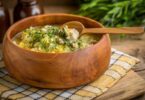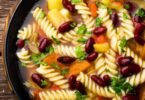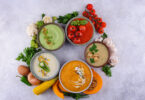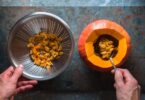Palestine is a land of rich and diverse history, culture, and cuisine. Its food reflects the influences of various civilizations that settled in the region, from the ancient Canaanites to the Arab, Persian, Turkish, and European conquerors and colonizers. Palestinian Kitchen is also shaped by the geography and climate of the land, from the fertile valleys and mountains of the West Bank to the coastal plains and deserts of Gaza and the Negev to the Galilee and the Golan Heights in the north.
In this blog post, we will explore some of the most distinctive and delicious aspects of the Palestinian Kitchen, such as its use of olive oil, za’atar, sumac, and other herbs and spices, its variety of bread, pastries, and sweets, its dishes based on legumes, grains, vegetables, and meat, and its traditions of hospitality and sharing. We will also learn about some of the most famous and popular Palestinian dishes and tools and how they reflect the history and identity of the Palestinian people.
Olive Oil: The Essence of Palestinian Kitchen

Olive oil is one of Palestinian Kitchen’s most essential and ubiquitous ingredients. Olive trees symbolize Palestine and its people, as they have been cultivated for thousands of years. Olive oil is used for cooking, frying, baking, dressing, dipping, and preserving food. It is also valued for its health benefits, as it is rich in antioxidants and monounsaturated fats.
Some of the most common and simple Palestinian dishes are based on olive oil and bread, such as zeit wa za’atar (olive oil and za’atar), zeit wa dukkha (olive oil and a mixture of nuts, seeds, and spices), and zeit wa shatta (olive oil and chili paste). These are often eaten for breakfast or with fresh or toasted bread, cheese, olives, tomatoes, cucumbers, and mint.
Another popular way of using olive oil is to make makdous (pickled stuffed eggplants), which are small eggplants that are hollowed out, stuffed with walnuts, garlic, chili, and spices, and preserved in olive oil and lemon juice. They are usually served as an appetizer or a side dish with bread or yogurt.
Za’atar: The Quintessential Palestinian Herb

Za’atar is a herb that grows wild in the hills and mountains of Palestine and is also cultivated in gardens and fields. It has a distinctive aroma and flavor, with thyme, oregano, marjoram, and sesame notes. Za’atar is used fresh or dried and is often mixed with sesame seeds, salt, and sumac to make a spice blend called za’atar.
Za’atar is used to season meat, poultry, fish, vegetables, salads, and cheese and is also sprinkled on bread, eggs, labneh (strained yogurt), and hummus. One of the most famous Palestinian bread is manakish (also known as manakeesh or manaqish), which are flatbreads that are topped with za’atar, cheese, meat, or spinach and baked in a wood-fired oven or on a metal dome called saj. Manakish are usually eaten with fresh vegetables, pickles, and olives for breakfast or lunch.
Sumac: The Sour and Colorful Spice
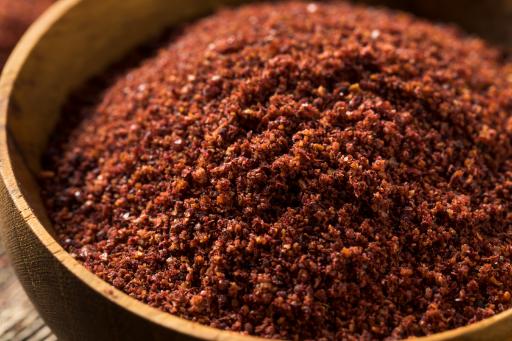
Sumac is a spice made from the dried and ground berries of a bush that grows in the Mediterranean region. It has a sour and tangy taste and a deep red color. Sumac adds flavor and color to salads, dips, sauces, soups, stews, and rice dishes. It is also used to marinate meat, poultry, and fish and to season grilled or roasted dishes.
One of the most iconic Palestinian dishes that use sumac is mussakhan (also spelled musakhan or msakhan), which means “heated up” in Arabic. It is a dish of roasted chicken seasoned with sumac, onion, olive oil, and pine nuts and served on top of taboon bread, a thick and chewy flatbread baked in a clay oven. Mussakhan is usually eaten with the hands, tearing pieces of bread and chicken and dipping them in yogurt or salad. It is considered a national dish of Palestine and is often prepared for special occasions and family gatherings.
Bread: The Staple of Palestinian Kitchen

Bread is an essential part of the Palestinian Kitchen, as it is eaten with almost every meal and is used to scoop up dips, sauces, and stews. There are many types of bread in Palestine, each with its own shape, size, texture, and flavor. Some of the most common ones are:
- Khobz (also known as pita or Arabic bread) is a round and thin flatbread that is baked in a hot oven and puffs up to form a pocket that can be filled with various ingredients, such as falafel, shawarma, kebab, cheese, or salad.
- Shrak (also known as markook or saj bread) is a large and thin flatbread cooked on a metal dome over a fire and usually folded or rolled with different fillings, such as labneh, za’atar, cheese, or meat.
- Ka’ak (also known as kayak al-Quds or Jerusalem bread) is a ring-shaped bread coated with sesame seeds and is often sold by street vendors, who insert a boiled egg, cheese, or za’atar inside the ring.
- Tamriyeh (zalabia or jalebi) is a sweet bread made from deep-fried dough soaked in sugar syrup and is usually eaten as a dessert or a snack.
Sweets: The Delights of Palestinian Kitchen

Palestinian Kitchen is also known for its variety of sweets, often made with nuts, honey, dates, cheese, and pastry. Some of the most popular ones are:
- Kunafa (also spelled knafeh or kunafeh) is a pastry made from shredded phyllo dough or semolina dough, filled with cheese, cream, or nuts, and soaked in sugar syrup. It is usually served hot and garnished with pistachios, rose water, or orange blossom water.
- Baklava (also spelled baklawa or baklawa) is a pastry that is made from layers of phyllo dough and is filled with nuts, such as walnuts, almonds, or pistachios, and soaked in sugar syrup or honey. It is usually cut into diamond-shaped pieces and is often flavored with cinnamon, cardamom, or rose water.
- Ma’amoul (also spelled maamoul or manual) are cookies made from semolina or flour dough, filled with dates, nuts, or coconut, and shaped into balls or domes. They are usually decorated with patterns or designs and are often dusted with powdered sugar. They are traditionally eaten during religious holidays like Eid al-Fitr and Easter.
Tools: The Essentials of Palestinian Kitchen

Palestinian Kitchen also relies on some tools that are used to prepare, cook, or serve food. Some of the most common ones are:
- Taboon (tannur or tanour) is a clay oven used to bake bread, such as taboon bread, manakish, or fatayer. It is usually built underground and is heated with wood or charcoal. The bread is stuck to the inner walls of the oven and is peeled off when ready.
- Saj (also known as markook or shrak) is a metal dome used to cook bread, such as saj bread, shrak, or markook. It is usually placed over a fire, and the bread is stretched and thrown on the dome and flipped over when done.
- Maklouba (also known as maqluba or maqloubeh) is a large pot used to cook a dish of the same name, which means “upside down” in Arabic. It is a rice, meat, and vegetables dish layered in a pot and cooked with broth and spices. The pot is then inverted onto a large platter and served with yogurt or salad.
- Mortar and pestle (jury or Dhawan) are tools used to grind, crush, or pound ingredients, such as spices, herbs, nuts, garlic, or chili. They are usually made from stone, wood, or metal and are used to make spice blends, dips, sauces, or pastes.
Conclusion: The Beauty of Palestinian Kitchen
Palestinian Kitchen is a reflection of the Palestinian people’s history, culture, and identity. It is a cuisine that celebrates the land’s bounty and diversity and its people’s creativity and resilience. It is a cuisine rooted in tradition but also open to innovation and adaptation. It is a cuisine that is generous, hospitable, and communal.



